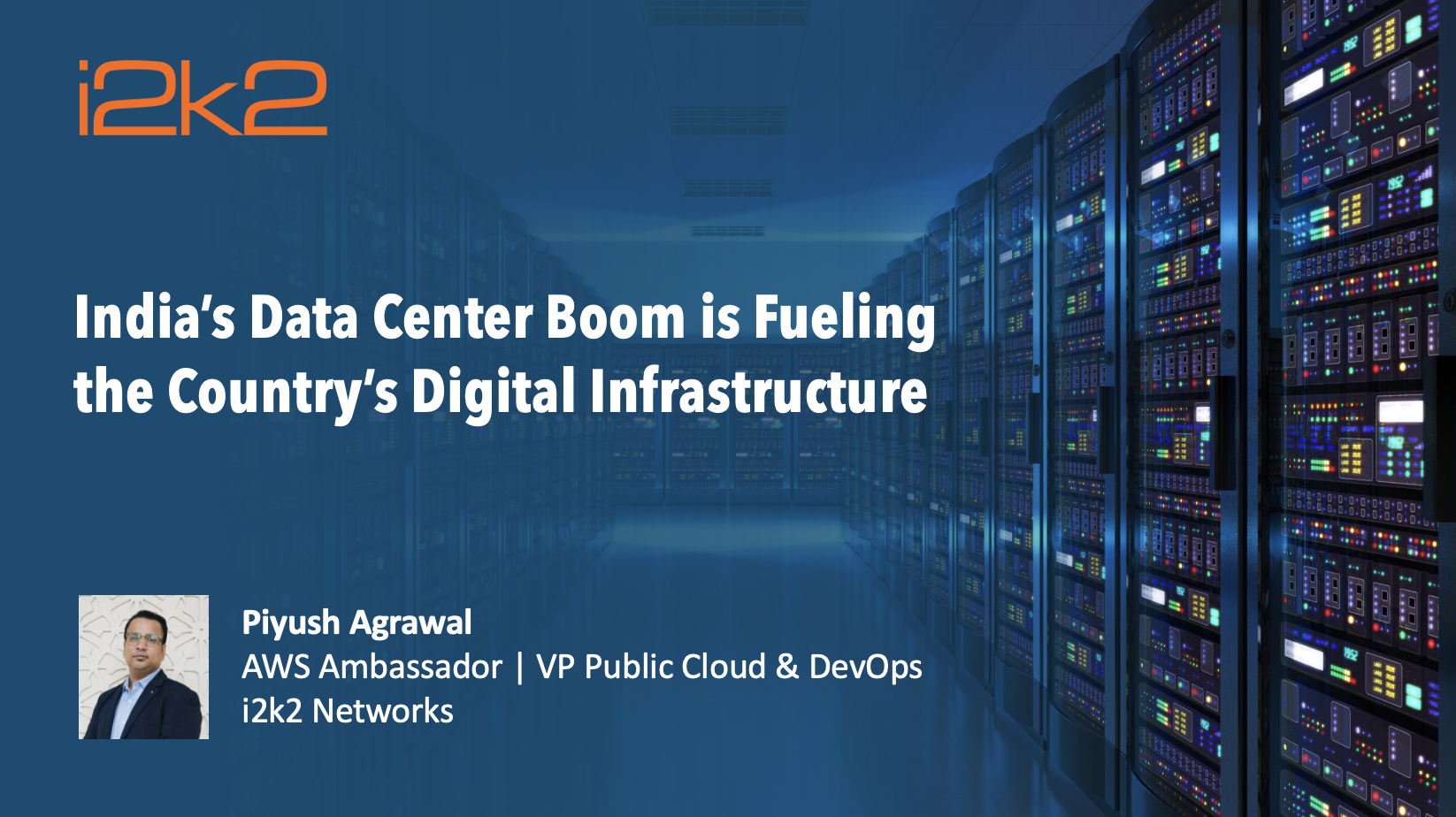India’s Data Center Boom is Fueling the Country’s Digital Infrastructure By: Piyush Agrawal, AWS Ambassador | VP Public Cloud & DevOps, i2k2 Networks

We are witnessing a digital adoption surge across industrial verticals in India, which is driving the country’s economic growth. As large enterprises, SMBs, and startups rely heavily on digital infrastructure, the demand for effective data center solutions is also rising. Data centers are becoming the foundation of the country’s digital economy, with organizations shifting from legacy physical servers toward scalable cloud solutions. This shift is enabling speed, agility, and innovation across organizations while optimizing IT operations. At the beginning of 2025, India had 806 million internet users when online penetration stood at 55.3%, and the country is expected to have over 900 million users by 2025.
The Decline of Physical Servers
For several decades, the physical servers, especially the traditional ones in data centers, were leveraged by Indian enterprises to host their data and applications. However, these infrastructures are increasingly showing their limitations in a digital-first world of today, with organizations embracing cloud computing instead. Physical servers also have scalability and flexibility limitations, incur high capital and operational expenses, and implementing security measures can be a challenge. Hence, enterprises are tapping into cost-efficient cloud platforms to power their applications and digital services. Moreover, with today’s prevailing AI workloads, which need cloud computing infrastructure, the investments in physical servers have significantly reduced.
Shift Toward Cloud-First Enterprises
Cloud technology disrupted the traditional data-center landscape that
hosted physical servers. In India,
organizations of all sizes are rapidly adopting the cloud for the several
advantages it brings. The cloud platform’s
pay-as-you-use pricing, faster time-to-market, seamless scalability, cost
savings, and enhanced security are attractive to businesses of all sizes. Organizations
leverage cloud-based AI and analytical services, and automation to gain quick
insights and for an enhanced user experience.
Government-led programs such as Digital India, Startup India, and
Make-in-India are also fueling cloud adoption across enterprises and public
sector organizations.
According to IMARC Group, the Indian cloud computing market size reached
USD 29.50 billion in 2024 and is expected to reach USD 232.78 billion by 2033,
exhibiting a CAGR of 25.80% between 2025-33.
The surge in demand for cloud computing is also fueling the construction of next-gen data centers across the country, supporting cloud-native workloads.
Drivers of Cloud and Data Center Growth
Being the fastest-growing major economy, India’s data consumption is
increasing by the minute. Unlike
traditional data centers, which were built to house fixed physical servers with
limited scalability, today’s digital-age data centers are purpose-built to
support cloud-native workloads with an emphasis on automation, energy
efficiency, and advanced security to meet the dynamic demands of modern
enterprises. India’s current data center
capacity across top cities, including Mumbai, Chennai, and Hyderabad, among
others, is 977 MW, and a projected data center capacity of 2.29 GW by 2028,
according to a Cushman & Wakefield report.
India’s data center market value is expected to increase from USD 4.5
billion in 2023 to USD 11.6 billion by 2032.
- Digital-first culture: The speed of digital transformation is accelerating across industries
from financial services to manufacturing, driving the need for robust storage
solutions.
- Growing internet user base: Research reveals that by 2025,
over 55% of India’s population is expected to have internet access, which is a
key development in digital inclusion. With the proliferation of smartphones and
an increase in connectivity and the demand for data storage and processing is
driving an unprecedented data center boom in India.
- Government of India initiatives: Initiatives from the government, such as the
Data Center Incentivization Scheme, the Data Center Economic Zone, and support
policies, are promoting data center development. Furthermore, the acceleration of data center
growth is also driven by the Government’s mandate for data localization, under
policies like the Digital Personal Data Protection Act.
- Growth in Cloud Computing Services: Organizations of all sizes and across all
industry sectors are rapidly migrating to cloud-based platforms for application
and data storage, which is fueling the demand for scalable data center
infrastructure.
- 5G, Edge Computing and AI: The roll-out of 5G and the shift towards edge computing due to the need for low-latency data processing are driving the demand for localized data centers. The growing adoption of AI is further accelerating data center requirements as it offers significant computational power and data processing capabilities that are required by these technologies.
Some of the major players in the Indian data center market include CTRLS Datacenters Ltd., Arshiya Ltd, NTT Global Data Centers and Cloud Infrastructure, Sift Technologies, Cisco Systems, Microsoft Corporation, and Reliance Datacenter.
Future of Data Centers in India
In addition to being present in metros, India’s tier 2 and tier 3
cities, such as Ahmedabad, Jaipur, Kochi, Vizag, Lucknow, and other smaller
cities, are gaining recognition for housing data centers and attracting further
investments. Moreover, even with the
generation of nearly 20% of the world’s data, India still accounts for only 3%
of the global data center capacity, presenting an opportunity for the country
to expand its storage capacity and enhance its status in the global digital
economy.



